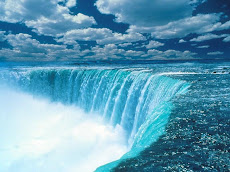
Namibia's famous highlight in the heart of the Namib Desert, is a huge clay pan, enclosed by giant sand dunes. Some of the spectacular hills of sand are, at a height of 300 metres, the highest in the world. Only after a heavy rainfall, which is a rare event in this area, does the vlei fill with water. As the clay layers hardly allow any water infiltration, a turquoise lake will remain for quite some time.
The dunes of the Namib desert have developed over a period of many millions of years. It is thought that the vast quantities of sand were deposited into the Alantic Ocean by the Orange river. This material was subsequently moved northwards by the Benguela current to be dumped back onto the land by the surf.
Harnas Wildlife Foundation:
Harnas farm which was once a cattle farm has become a sanctuary for injured and orphaned animals by the owners. Later Harnas Wildlife Foundation has been established for the purpose of supporting of activities of the orphanage and controlling of donations. The Foundation is the only anim al welfare foundation of its kind in Africa.
al welfare foundation of its kind in Africa.
Harnas Lion, Leopard and Cheetah Farm was registered in April 1995 as a guest farm. The high costs of animal care necessitated this move. The Van der Merwe family had been taking in animals since the late 1970's and operated the farm on the income generated from cattle farming. The expenses and orphans grew quickly and by 1995, the farm housed some 200 creatures.
Since the establishment of the guest farm, Harnas has grown to become part of the public consciousness and therefore the Trust Fund and Wildlife Foundation was established during mid 1997 to control donations and monies received.
Today, Harnas operates as an animal sanctuary and orphanage. We are currently embarking on a new Wild Dog rehabilitation program which will utilize our dogs as a breeding colony.
Kolmanskop Ghost Town:
Kolmanskop is a ghost town in southern Namibia, a few kilometres inland from the port of Lüderitz. In 1908, Luederitz was plunged into diamond fever and people rushed into the Namib desert hoping to make an easy fortune. Within two years, a town, complete with a casino, school, hospital and exclusive residential buildings, was established in the barren sandy desert.
But shortly after the drop in diamond sales after the First World War, the beginning of the end started. During the 1950's the town was deserted and the dunes began to reclaim what was always theirs.
 Desert Express:
Desert Express:
Desert Express was designed and built in Namibia, and it took 250 000 manhours during a period of 18 months to complete the construction of the train. The workforce consisted of 40 skilled artisans, 3 supervisors, 2 technical superintendents and 2 senior engineers. Where possible, Namibian products and skills were used. Desert Express was launched on 3 April 1998 by the President of Namibia, Dr Sam Nujoma.
Lay-out of Desert Express
1)Rhino
Power Car and Storage
2)Meerkat
6 Compartments - Accommodation coach
3)Springbok
6 Compartments - Accommodation coach
4)Oryx
6 Compartments - Accommodation coach
5)Kokerboom
6 Compartments - Accommodation coach
6)Spitzkoppe
Lounge and Bar
7)Welwitschia
Restaurant
8)Stardune
Bristo Bar
9)Starview
Function/Conference Venue
The nine coaches are permanently linked via drawbar to minimise coupling and for improved ride comfort.
Spitzkoppe / Erongo:
The Spitzkoppe between Usakos and Swakopmund is also described as the "Matterhorn of Namibia". Rising to a altitude of about 1800 metres, the Spitzkoppe is by no means Namibia's highest mountain, however, due to its striking outlines, it is regarded as the most well-known mountain in the country. Situated in an endless, dry plain, the island of mountains can be seen from far away.
The granite massif, which is part of the Erongo Mountains, was created by the collapse of a gigantic volcano more than 100 million years ago and the subsequent erosion, which exposed the volcanic rock, granite.
Cheetah Conservation Fund:
Founded in 1990, the Cheetah Conservation Fund (CCF) has as its mission is to be an internationally recognised centre of excellence in research and education on cheetahs and their eco-systems, working with all stakeholders to achieve best practice in the conservation and management of the world's cheetahs.
The CCF is based in Namibia, the country with the largest and healthiest population of cheetahs left in the world. Its Research and Education Centre is located 44 km. east of Otjiwarongo.



No comments:
Post a Comment